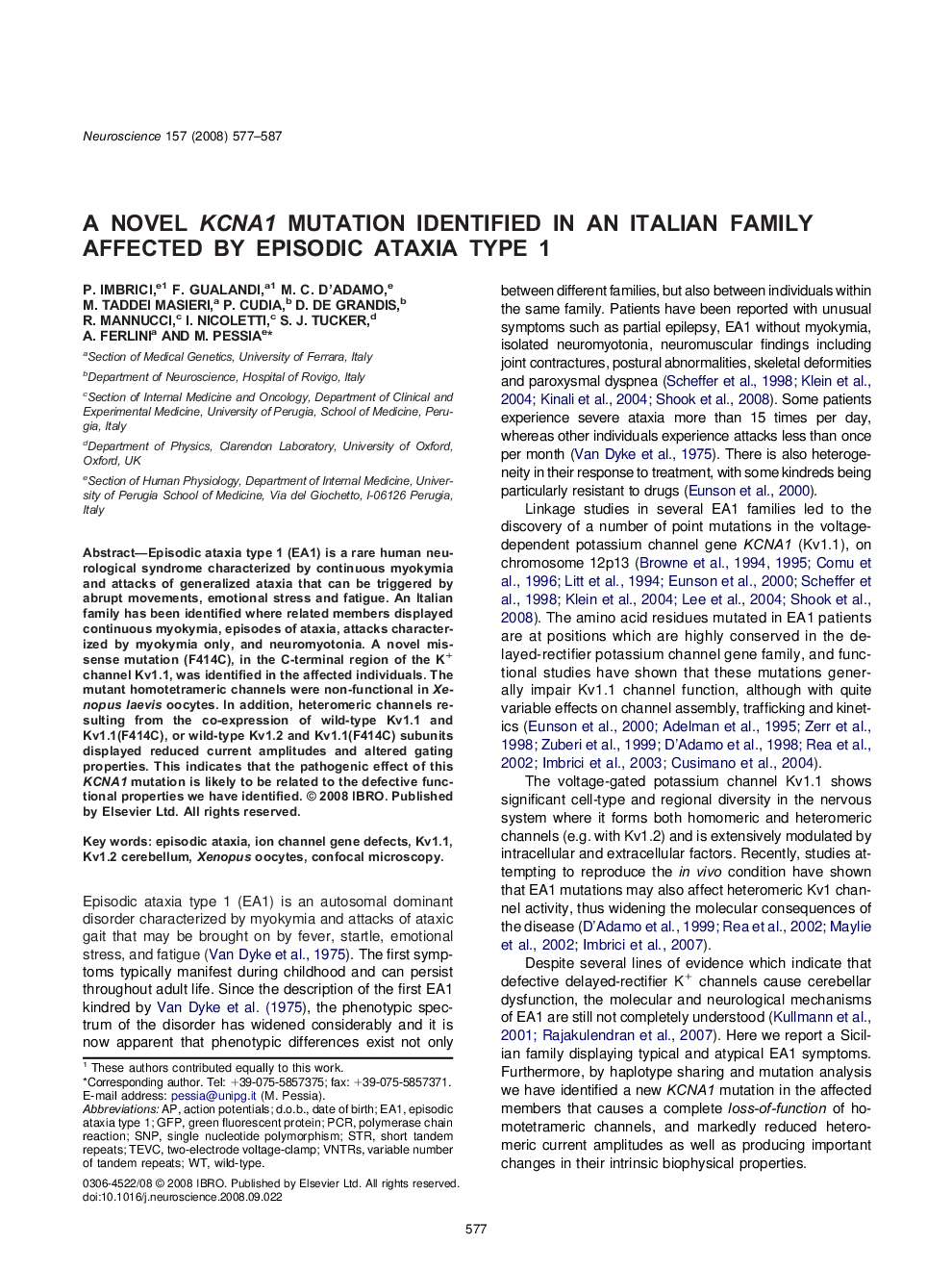| Article ID | Journal | Published Year | Pages | File Type |
|---|---|---|---|---|
| 6278006 | Neuroscience | 2008 | 11 Pages |
Episodic ataxia type 1 (EA1) is a rare human neurological syndrome characterized by continuous myokymia and attacks of generalized ataxia that can be triggered by abrupt movements, emotional stress and fatigue. An Italian family has been identified where related members displayed continuous myokymia, episodes of ataxia, attacks characterized by myokymia only, and neuromyotonia. A novel missense mutation (F414C), in the C-terminal region of the K+ channel Kv1.1, was identified in the affected individuals. The mutant homotetrameric channels were non-functional in Xenopus laevis oocytes. In addition, heteromeric channels resulting from the co-expression of wild-type Kv1.1 and Kv1.1(F414C), or wild-type Kv1.2 and Kv1.1(F414C) subunits displayed reduced current amplitudes and altered gating properties. This indicates that the pathogenic effect of this KCNA1 mutation is likely to be related to the defective functional properties we have identified.
